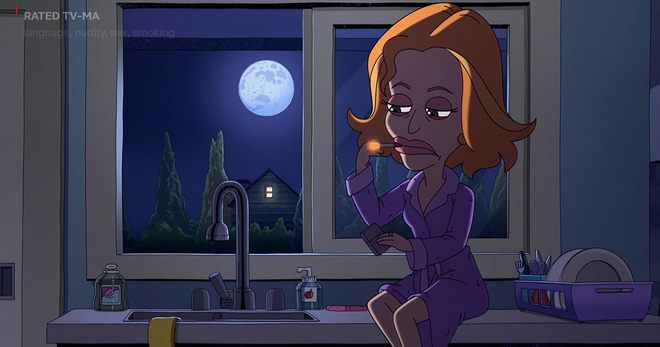Tobacco imagery rising in top entertainment, including among 2024 Oscar Best Picture nominees
To find a smoke-free setting among this year’s Oscar Best Picture nominees, you’d have to go to Barbie Land. Of the 10 films nominated for the Oscars top prize, all except “Barbie” feature smoking, according to Truth Initiative’s sixth annual analysis of tobacco imagery in top entertainment, which finds a surge in on-screen tobacco use across the most popular streaming shows among 15- to 24-year-olds, music videos, as well as youth-rated and Oscar-nominated movies.
On-screen smoking, which is often glamorized and portrayed as edgy and cool, is rising despite well-established research that it influences young people to start using tobacco products – a conclusion reached more than a decade ago in a 2012 Surgeon General report. In addition, research from Truth Initiative has also found that exposure to smoking imagery in streaming shows can triple a young person’s odds of starting to use e-cigarettes – today’s top tobacco product among young people.
This year's nine Oscar-nominated films, which mark an increase from last year’s seven out of 10, include “Maestro,” “The Holdovers,” “Oppenheimer,” “American Fiction,” “Killers of the Flower Moon,” “Poor Things,” “Anatomy of a Fall,” “The Zone of Interest,” and “Past Lives.” Awards like the Oscars, Golden Globes, and Emmys garner prestige, media attention, and increased viewership for films and TV shows, amplifying the negative impact of on-screen tobacco use on young viewers.
A problem across top entertainment
In addition to films, this year’s report found troubling trends across entertainment. The number of tobacco depictions in top shows among 15- to -24-year-olds increased by 110% between 2021 and 2022, exposing an estimated 25 million young people to tobacco imagery. The report also found that tobacco imagery in top binge-watched shows nearly quadrupled, and twice as many music videos for the most popular songs contained images of tobacco. As young people increasingly consume video content via social platforms (nine in 10 U.S. teens say they use YouTube, the top social media platform) a Truth Initiative study currently underway also finds that more than a third of 15- to 24-year-olds surveyed who used YouTube, TikTok, and Twitch reported exposure to tobacco imagery.
Tobacco product use among young people remains a serious public health concern, with more than 2 million middle and high school students using e-cigarettes in 2023, according to the National Youth Tobacco Survey. Nicotine harms developing adolescent brains and may make young people more susceptible to addiction later in life, and nicotine addiction can also increase stress and intensify feelings of depression and anxiety, a growing concern given the Surgeon General’s report about the worsening national youth mental health crisis.
40% of all movies containing tobacco depictions were rated appropriate for young people
Two of the Best Picture nominees – “The Zone of Interest” and “Past Lives” – are rated PG-13. Notably, a nominee for Best Animated Feature Film – “The Boy and the Heron,” rated PG-13 – also features smoking.
A separate report from NORC at the University of Chicago published alongside the Truth Initiative analysis found that 40% of all 2022 movies containing tobacco were rated appropriate for youth. Four PG-rated films contained tobacco imagery, up from the one PG-rated movie to include tobacco in 2021. The number of incidents in these movies climbed from 8 to 103. The youth-rated film “Glass Onion: A Knives Out Mystery” also featured e-cigarette use.
More must be done to protect young people from on-screen tobacco imagery
Tobacco imagery has been stubbornly present in media most popular with youth, despite years of research tying on-screen tobacco depictions with youth tobacco use. While Truth Initiative applauds the work that some studios and networks have done to reduce tobacco imagery in their programming, the continued inclusion of tobacco in PG-rated films and skyrocketing tobacco use in streaming shows, music videos, and on social media platforms continues to expose too many young people to tobacco, putting them at risk of nicotine addiction.
More needs to be done to urge decisionmakers at all levels, including entertainment executives, leaders of streaming platforms and broadcast networks, showrunners, directors, writers, actors, and music artists, to denormalize tobacco use and eliminate it on screens most popular with young people.
Truth Initiative calls for a comprehensive set of policies to curb tobacco depictions on screens, including:
- Developing and publicizing anti-smoking policies – Studios should develop policies that restrict tobacco content in youth-rated films, similar to those in effect among members of the Motion Picture Association.
- Including anti-smoking messages when tobacco imagery is present – Anti-tobacco and anti-vaping ads are successful at reducing tobacco use and should appear before and after shows that contain tobacco imagery.
- Increasing awareness and outreach – Increasing awareness across the industry about the risks of portraying tobacco on screen is vital.
- Empowering actors – Actors who understand the harmful effects of on-screen tobacco use could include “no tobacco” clauses in their contracts. If a scene involves tobacco use, SAG-AFTRA could require a “tobacco rider,” similar to the nudity riders used in actors’ contracts today, that outlines the parameters of tobacco use and includes appropriate warnings about the health impacts of prop cigarettes and the impact of tobacco imagery on young audiences.
- Modernizing ratings systems and parental controls – Movies and shows that portray tobacco use should be rated R and TV-MA. An R rating could disincentivize studios from including tobacco content.
- Monitoring compliance with existing regulations – A ban on paid tobacco product placements in movies and shows was codified into federal law in 2009, but shows and movies continue to provide free advertising for the tobacco industry today. The film industry must certify that tobacco companies did not exchange anything of value for depictions of smoking or vaping in a show or movie.
More in tobacco in pop culture
Want support quitting? Join EX Program
By clicking JOIN, you agree to the Terms, Text Message Terms and Privacy Policy.
Msg&Data rates may apply; msgs are automated.



